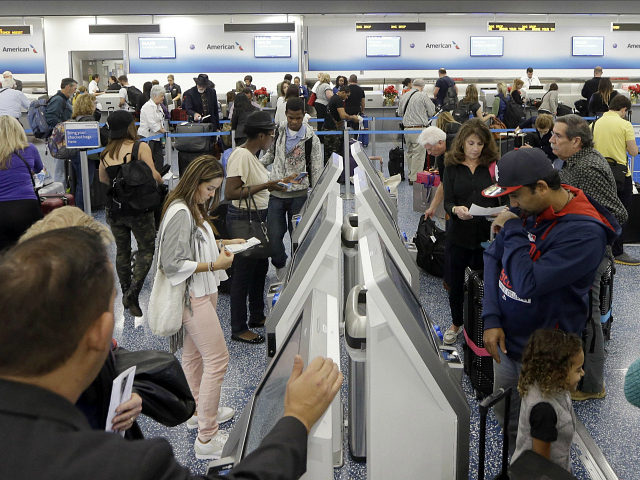Airports and passenger planes across the United States face evolving “insider threats” from aviation industry employees who have joined terrorist groups and are seeking to carry out “lone wolf” attacks, the House Homeland Security Committee warns in a recent investigation.
“America’s airports and aircraft remain vulnerable to attack and exploitation by nefarious individuals,” the investigation report reads, adding that the “troubling reality” is that “current security standards would likely fail to prevent a determined adversary with insider access from causing harm to an airport or aircraft.”
The House report is titled “America’s Airports: The Threat From Within.”
It notes:
Recent insider threat examples discussed in this report include an attempt to detonate a bomb at an airport, gun and drug smuggling, an expressed willingness to smuggle explosives as well as employees who became involved in terrorist activities overseas. In all of these instances, the employees in question had access to secure areas of the airport.
An estimated 900,000 people work at U.S. airports. Many of them have access to secure areas and have the ability to bypass traditional screening requirements other travelers at the airport must endure.
Nevertheless, only three airports — Miami, Orlando, and Atlanta International — screen all of their employees and their belongings before allowing them into secure areas.
The majority of the remaining airports rely on random screenings and credentialing, a revelation move that points to troubling “security flaws” that may be exploited by “lone wolf” attackers and other terrorists, notes the report, adding:
While the overwhelming majority of these airport workers take the inherent responsibility seriously, there are increasing concerns that insider threats to aviation security are on the rise… These insider threats, and the lack of adequate access controls at airports nationwide, are of particular concern given the rise of terrorist groups bent on penetrating U.S. airport security to commit terrorist acts and “lone wolf” attacks being inspired by terrorist groups like ISIS [Islamic State].
The Transportation Security Administration’s (TSA) office of law enforcement houses the agency’s insider threat unit that works with both state and federal partners to monitor criminal activity within airports.
In February 2016, TSA officials told lawmakers that insider threat mitigation efforts resulted in arrests in Dallas, Los Angeles, San Francisco, and Puerto Rico.
“TSA’s efforts to address insider threats at U.S. airports have shown encouraging results,” notes the House report. “From 2014 to 2015, TSA increased the total number of physical employee screenings from 2.1 million to 12.9 million and 88 percent of domestic airports have reduced their total number of access points.”
“This has resulted in the elimination of approximately 500 access points throughout the country,” it also reports, adding, “However, many of these steps have been reactionary, and implemented on an ad hoc basis.”
ABC News points out that several airport employees with access to secure areas, including a cart driver and jet fueler at Minneapolis-St. Paul Airport, have joined jihadist groups abroad, like the al-Qaeda-affiliate al-Shabaab and its rival ISIS.
“One contractor at Dallas-Fort Worth even bragged to an undercover FBI agent that he could smuggle a bomb onto an aircraft for a $4,000 fee. (He was later arrested, convicted, and sentenced to 15 years),” adds the news outlet. “Perhaps even more concerning, an inspector general’s report released in 2015 found 73 aviation workers with possible ties to terrorism that were not revealed on background checks.”
In response to the House investigation, the TSA said in a statement, “We are reviewing the report and will continue to work with the committee as well as our industry, intelligence community, and law enforcement partners to ensure all modes of transportation remain secure.”
TSA is a component of the U.S. Department of Homeland Security (DHS).

COMMENTS
Please let us know if you're having issues with commenting.